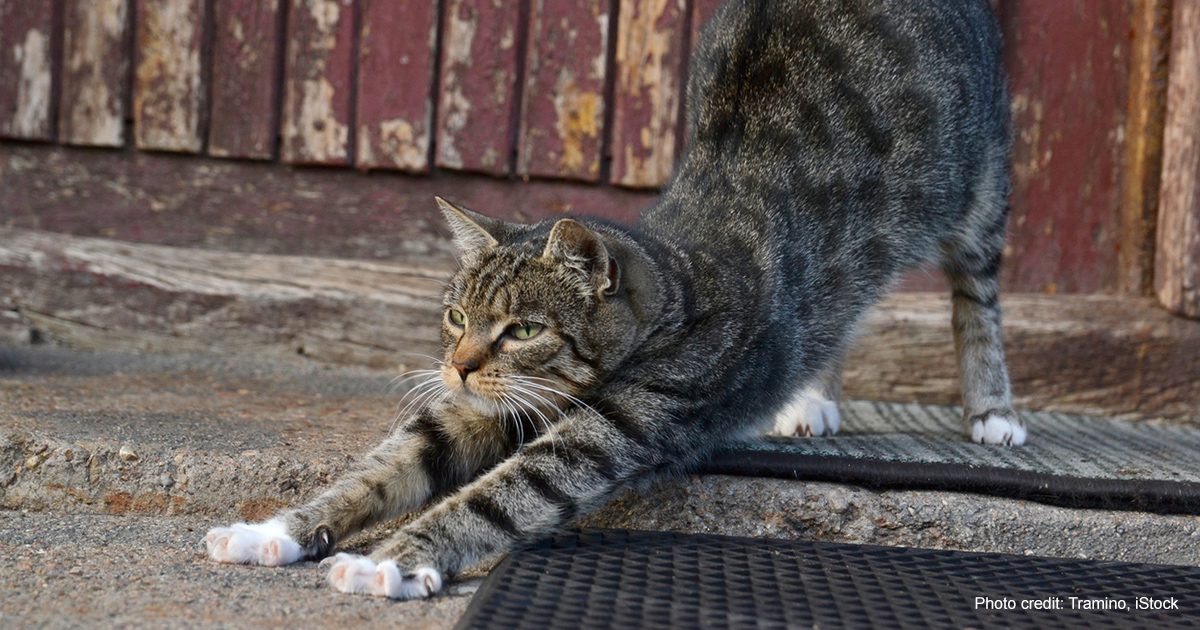
Aug 17, 2023 Rudyard Kipling’s – The Cat That Walked by Himself
The International Fund for Animal Welfare established August 8th as International Cat Day in 2002. Eighteen years later, the British NGO, International Cat Care, took over the custodianship of the day. This August, WellBeing International suggests celebrating the day by reading one of Rudyard Kipling’s Just So stories, The Cat That Walked By Himself, to a young relative.
The “Just So” stories, first published in 1902, are so-called because they were created as bedtime tales for Josephine “Effie” Kipling, the first-born child of British author Rudyard Kipling. According to Kipling, he had to ensure that the stories followed the same trajectory and wording (and were “Just So”) every time he related them. Effie would correct him if he missed some words or changed the story. Any parent who reads regularly to a young child will recognize this requirement. Children have their favorite stories that they request time and again while insisting that such stories, especially the favorite parts, be faithfully repeated ‘just so.’
The Cat That Walked By Himself is Kipling’s take on animal domestication. Kipling started the story by relating how Woman made a warm home for Man in a cave, and then how using magic, she enticed wild creatures (specifically the Dog, the horse, and the cow) to serve her and Man in exchange for warmth and food. Each time, the Cat observed the compact negotiated between the Woman and the Wild Dog, the Wild Horse, and the Wild Cow but declined to participate, saying, “I am the cat who walks by himself, and all places are alike to me.”
Nevertheless, the Cat was very tempted by the warm cave, the food, and the milk. The Cat asked the Woman could he partake in these comforts if she commented kindly on something the Cat did. The Woman laughed and said she would never say anything complimentary about the Cat, but if she did, then for each flattering comment, the Cat could first sleep in the warm cave, second eat the food she prepared, and third drink the milk provided by the cow.
As the story unfolds, the Cat first soothes the Woman’s crying baby, then amuses the baby with its antics, and then catches and kills a mouse in the cave. Each time, the Woman compliments the Cat, and, as they had agreed, the Cat then can sleep in the warm Cave, eat the food and drink the milk. However, the agreement was between the Cat and the Woman, not between the Cat and the Man or the Dog. The Man and the Dog took issue with the Cat’s declaration of independence. The Man reacted by throwing items at the Cat, and the Dog chased the Cat up a tree. According to the tale, all Men and Dogs have behaved similarly towards Cats ever since.
The Cat retains its independence (“walks by itself”) but at the cost of being harassed by both Man and Dog.
As a young boy, I devoured Kipling’s writings. Particular favorites included the Just So stories describing how the elephant got its trunk, the leopard’s spots, and the rhinoceros’ wrinkly skin. But his other tales were just as magical. Apart from the very well-known story of Mowgli in the Jungle Book, Kotick the White Seal relates how Kotick found a safe beach (not visited by human sealers) for his community of seals, while Rikki Tikki Tavi tells how an Indian mongoose protected the human family he had adopted from cobras in the family’s garden. Readers interested in the Asian Elephant series should also take the time to Read Kipling’s story of Toomai, the son of an elephant mahout.


